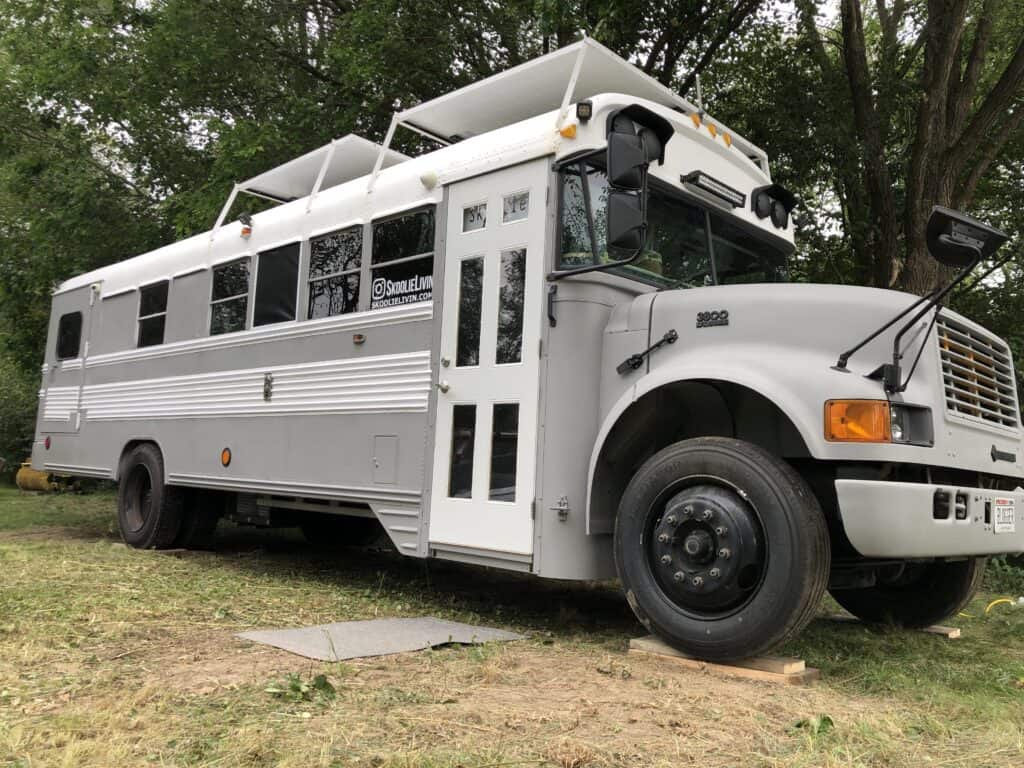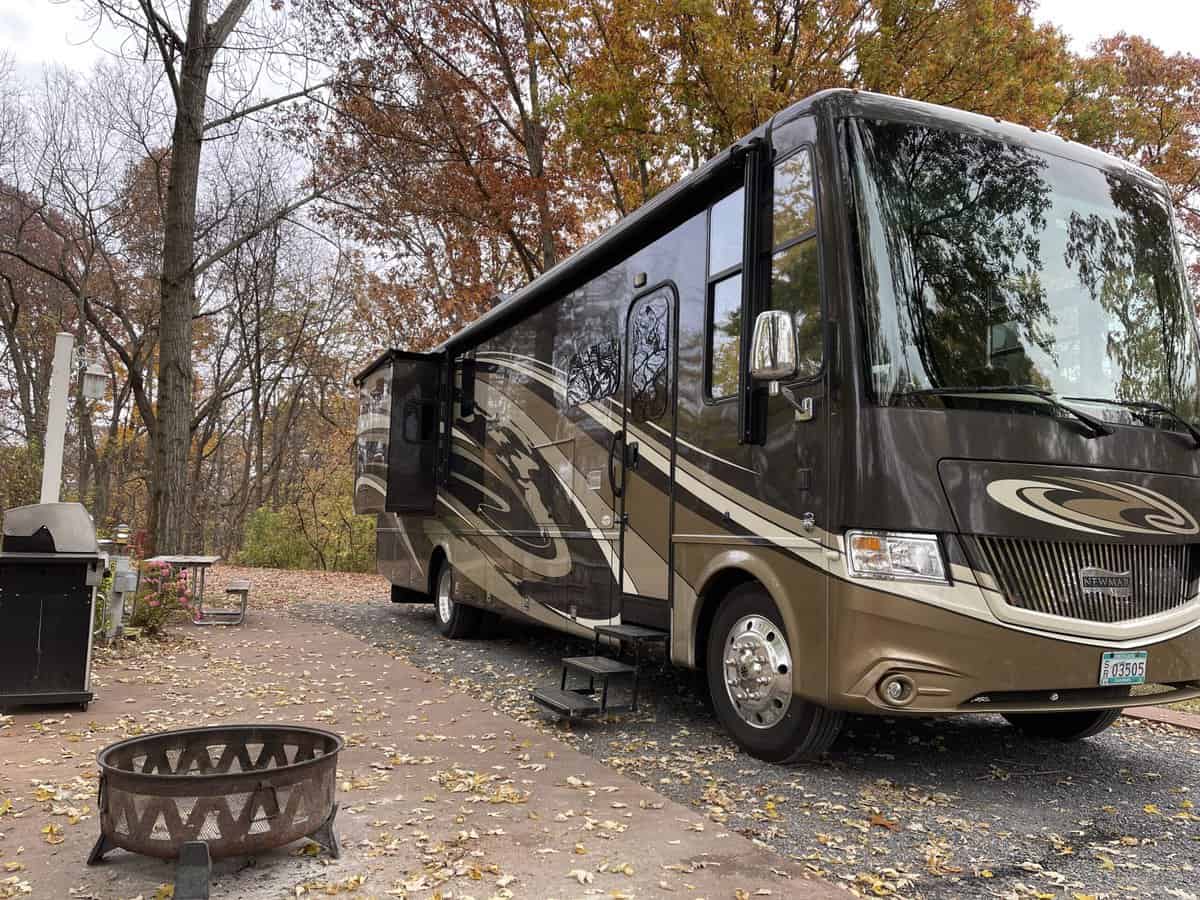
How To Build Out A Skoolie Bus Conversion
School bus campers (also known as skoolies) are becoming more and more popular in the RV world. If you want one of these converted school buses, you’ll probably have to do a lot of the work yourself. This is why it’s useful to know some basics on how to turn a bus into an RV.
Every skoolie project will be a bit different because people have different preferences when it comes to layouts, sizes, decoration, materials, budget, etc. There are a few universal basics that must be followed if you want to make it personalized, safe, and livable.
A skoolie must strike a balance between a comfortable living space and a roadworthy vehicle. Below is a general overview of the things you’ll need to do to turn a bus into an RV. More details, instructions, and community ideas can be found at resources such as skoolie.net.
Inspect the bus
Once you’ve obtained a bus, the first thing you’ll want to do is perform a thorough inspection. If the bus is old and has been retired, there’s a good chance that its engine, tires, and other mechanical parts are in need of replacement or repair.
Also, make sure you examine the interior and exterior. A lot of the fixtures will be removed later on, but take a good look at the siding, windows, ventilation, etc. If there are any obvious holes or rusted areas, you’ll need to focus on those first. The vehicle must be structurally sound before you start converting it into an RV.
Keep track of all the things that need work and focus on the biggest issues first. Once you’re secure in the knowledge that the bus is in the best shape possible, you can move on to the actual conversion process.
Strip the interior
The first thing you’ll want to do is strip the interior. Most school buses will be outfitted with rows and rows of padded seats. Maybe you want to save a seat or two for your design, but generally, you can simply gut the entire interior.
This includes the flooring as well. Most buses have rubber flooring that’s less than ideal for a living space. Try to strip away as much as possible so you have an empty shell to work with. Sand down the floors and remove anything that isn’t necessary to your build.
Set up wiring and plumbing
To turn a bus into an RV, you next need to map out your utilities. Standard school buses rarely have lights, and none of them will have running water or holding tanks. If you want to enjoy these modern conveniences in your new skoolie, you need to find a way to install these utilities.
Luckily, it’s possible to install wiring into a school bus. If you’re not comfortable with doing this yourself, you can hire a contractor to help you out. Make sure your bus has good batteries that can power the vehicle as well as your electrical needs.
When it comes to plumbing, it can be as simple or complex as you want. Some people simply use a small holding tank to operate a sink. Composting toilets help you save water and they also cut out the need for additional plumbing. However, If you want to install a whole setup with a flushing toilet and shower, it will be a bit harder.
It all depends on your preferences. Most people need at least a small holding tank for their RV so they can have fresh water on the road. This can be stored in the bus undercarriage, inside a cabinet, or underneath a piece of furniture. The placement and size of the tank is up to you.
Insulate the bus
Insulation is the next problem to tackle. School buses are not well insulated because they aren’t used for long-term travel or living. They are chock-full of windows, which makes it hard to maintain a stable interior temperature. The walls are also thin and usually just made of metal.
If you want to turn a bus into an RV, you need to insulate every part of the interior. This usually involves blocking off a few of the windows and/or replacing them with dual-paned models. The ceiling, walls, and floor also need a protective layer that will help them retain heat.
There are lots of good insulation materials for skoolies, but some are more cost-efficient than others. Some of the options include:
- XPS Rigid Foam
- Closed Cell Spray Foam
- Sheep Wool
- Fiberglass
- EPS Foam
- ISO Foam
A layer of plywood or plaster can then be installed over your insulation of choice. This will help hide the wires and insulation and provide a more attractive interior. You can also use rugs/carpeting to make the floor more insulated. Placing curtains or reflective panels over the windows has a similar effect.
Install/design the fixtures
Now we can get into the actual design of the skoolie. The freedom to design a personalized living space is what leads many people to turn a bus into an RV. Once the interior is totally stripped, you have a blank canvas to work with.
Focus on your personal needs first and foremost. Some of the most important considerations include a sleeping space, kitchen, and storage areas. You can use convertible sleeping spaces like sofa beds or even string up a hammock.
A lot of your fixtures and furniture will need to be custom-built to fit into your bus design. You can do this yourself or commission craftsmen to help you out. Some things can also be recycled or repurposed for your new living space. People have gotten quite creative when it comes to setting up their design.
Decorate
Now we get to the fun part! Once everything is just the way you like it, you can decorate your skoolie to match your personality and needs. Some people have opted for a rustic appearance with a lot of natural wood and stone. Others have a modern aesthetic that incorporates a white color scheme and metal fixtures.
Everything is up to you! You can truly make the bus feel like home once you reach this stage.
Get licensed and insured
Finally, you’ll want to make sure you have the proper certification to legally and safely drive your skoolie. School bus drivers require special training for a reason. In order to meet the legal requirements for owning and driving a skoolie, you need the following items:
- Current Title
- Bill of Sale
- Certification of Weight
- Conversion Photos
- Physical Inspection
- Proof of Insurance
- The Skoolie Must Meet the Definition of an RV
- CDL License
You can learn more about these requirements here.
Insurance is an important part of this approval process. Make sure you’re protecting your investment with a good insurance plan! Every RV should have it, and a skoolie is no exception.
Turning a bus into an RV is a highly personal process, but hopefully this guide has given you some idea of where to start. If you want to connect with the skoolie community and find inspiration for your build, be sure to visit skoolie.net.
Related articles:





CDL is not needed once the title is changed to an RV.
How are folks getting insurance and roadside service for skoolie conversions in CA? Any leads? Some companies have fine print that say “no conversions”.
A CDL will be required, for sure, if the vehicle is equipped with air brakes!
I’m currently a school bus driver in Ohio… and have a 26,000 pound class A motor home. I do need my Commercial Drivers License for the bus … as a school bus, but have never needed a CDL for the motor home! My nonCDL wife legally drives the motor home.
I can’t speak to every state … but generally under federal motor vehicle regulations, if the vehicle is REGISTERED as non-commercial, carrying fewer than 16 passengers, a CDL is not required !
Good basic info. I’ve always understood that CDL licenses are not required, though.